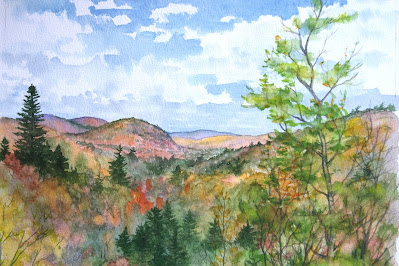Did I make a mistake?
When deciding to become an artist, whether young, or say middle-aged like me, one has to decide what kind of artist that you want to be. A difficult decision to make, especially should you be young, and really don’t know what direction to take, and even whether you really want to be an artist. Of course the easy route is to get your teaching certificate, and surround yourself with others who want to be, but are reluctant to make the commitment. Teachers, if I could make a comment, I find quite amusing. They stand before students who have committed to become artists, portray themselves as dedicated artists, when they are reluctant themselves to commit. Anyway, that said, back to this idea that once one leaves the safety of art school, one must decide direction. To embrace art for art’s sake, ever hopeful of creating art historically significant, and finding a place in history is admirable, but it’s also setting one up for failure, and a life of, often, misery and doubt, the starving artist route best taken if your parents are wealthy and supportive. Then, there’s the commercial side of art, interior design, exterior design, and making art for the common people. The latter can be seen at art festivals and on street corners listening to stories from passersby, who reveal that their aunt Minnie also makes paintings, and actually sold one last year for $50.00. You can also work hard and become selective in your subject matter. Become known as a portrait painter, and be represented by a gallery. A good way to go, if you're very good at what you do. Soon, however, you’ll realize that although the pay is sort of good, you’ve lost sight of your dream of becoming the artist that you thought that you might be. And then, there’s someone like me. I aspired to make a boyhood dream a reality, got caught up in the reality of survival, tried the festival route, the gallery route, and the home studio route. Nothing really seemed to work. One then questions why you left a good paying job to risk everything. In my case, however, being close to what would be considered in the work-a-day world, the retirement age, I decided to put my efforts to work encouraging the protection and preservation of our natural heritage. I decided to paint , or perhaps it might be described, record, various parks and places, and create a visual record of the now for the future, a means to compare changes. I sketched and painted in wild places, recording my efforts in books, which I personally published. I sold many sketches, and donated many to charitable organizations. There were moments of satisfaction, temporary attention for my work…..and now I’m about to disappear. My choice, my direction. Not for everyone, but still my choice. Of course, it would have been nice to have some of my art recognized nationally, but such is fate, and although my sketches are unique and do leave a record of what was, they never stood out enough to become historically unique. So, I don’t know whether I properly explained the difficult choices that face those wanting to work at becoming an artist, but there it is. Not at all easy….no regrets.


%20copy%202.jpg)

.jpg)
%20cropped.jpg)



